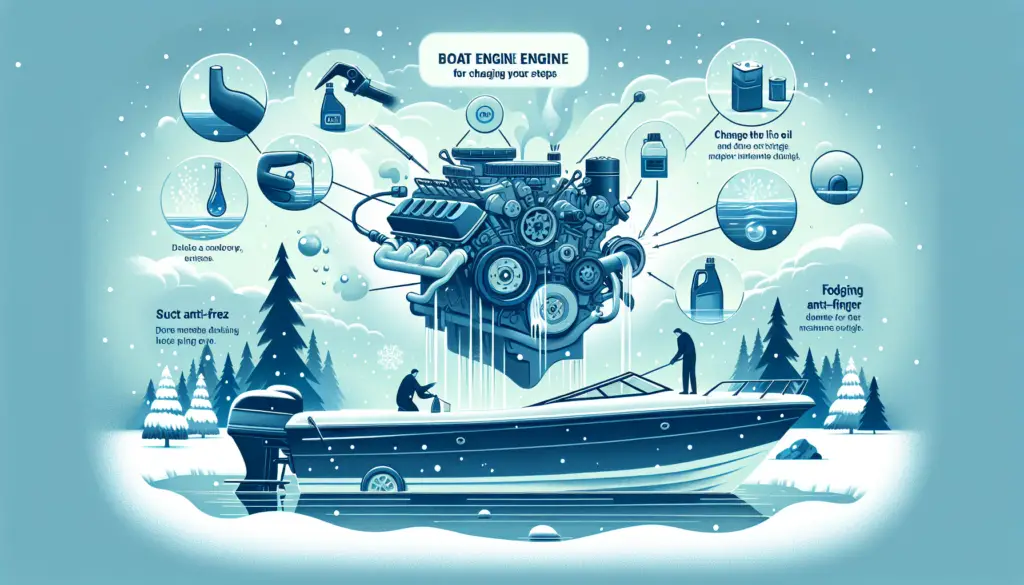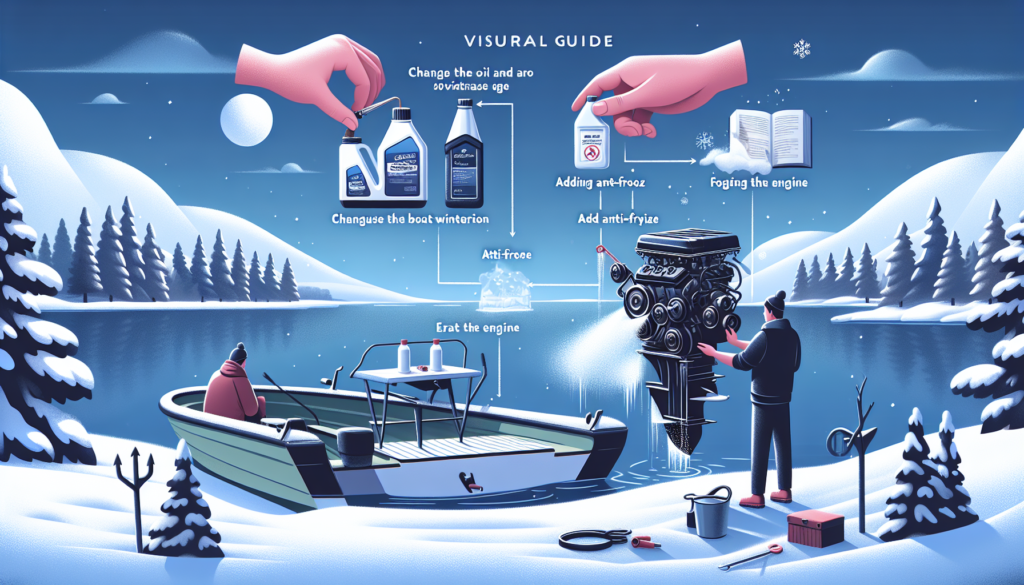Winter is approaching and your boat engine needs to be properly winterized to withstand the harsh weather conditions. “The Ultimate Boat Engine Winterization Guide” is your comprehensive playbook to protect your precious maritime investment from the adverse effects of cold weather. Encompassing expert tips, compelling advice, and fool-proof steps, this guide will enable you to confidently prepare your boat engine for winter, ensuring it emerges in the spring ready for another season of sailing. Perform your boat winterization with utmost effectiveness and efficiency with this in-depth article.
Understanding the Importance of Winterizing Your Boat
Winterizing your boat is as essential as routine maintenance checks and anything else related to preserving the longevity of your beloved watercraft. Winter preparation might need you to take a day or two out of your schedule, but it’s absolutely worth it.
The necessity of winterization
The primary need to winterize your boat arises from the shift in weather. As temperatures drop and water freezes, your boat, particularly the engine, might sustain severe harm. Metal parts might get brittle, and fluids in the engine could freeze leading to blockages, causing substantial damage to your boat’s engine. The aim here isn’t only to protect your boat but to prepare it to spring back to life when the waters call again.
Potential risks and damages without proper winterization
Without suitable winterization, your boat engine runs the risk of developing severe devastation, including frozen pipes and cylinders, cracked engine blocks, and corroded parts, to name a few. Such damages, apart from being expensive to repair, will keep you off the water for a considerable time.
Possible cost implications for negligence
Neglect in the regard of winterizing could potentially cost more than the boat itself. Reconstructing an engine or replacing parts isn’t merely a headache but also a massive dent in your wallet. Therefore, neglecting winterization is a financial burden that you’d want to avoid.
Preparation for Boat Engine Winterization
The initial step in successful boat winterization involves adequate planning and preparation.
Gathering required tools and materials
This includes obtaining the necessary tools such as wrenches, screwdrivers, cleaning materials, winterizing fluids, etc. It’s always a wise move to have everything in hand before you begin. Waiting for a part to arrive while the boat is partially disassembled is not something you’d want.
Ideal conditions and space for winterization
It’s important to winterize under suitable conditions. A dry and well-lit area is a prerequisite. Besides, make sure there is an adequate supply of fresh water and an appropriate disposal area.
Locating and accessing the boat engine
You must know where the engine is and how to get to it. The last thing you want is to scramble through the owner’s manual on a cold day, trying to locate the engine.

Draining and Flashing the Cooling System
Once you are equipped with the right tools and knowledge, the next step is to focus on the cooling system.
Steps to drain existing coolant
Draining coolant is your first step. It’s advisable to follow the procedure outlined in your boat’s manual exactly. In most boats, it’s about finding the right drain plugs.
Proper flushing techniques to remove debris and salts
After draining, flushing the system is crucial to remove any remaining debris or salts. Using a freshwater flush kit will do the trick. Make sure to run fresh water through the system until it runs out clear on the other side.
How and why to use antifreeze in cooling system
Once the system is empty and clean, fill it up with antifreeze. The coolant tends to keep metal parts from rusting and prevent any remaining water from freezing and causing cracks. Make sure to use a marine-grade anti-freeze, which is non-toxic and eco-friendly.
Fuel System Protection
An equally important part of winterizing your boat engine is taking care of the fuel system.
Correct fuel stabilizer usage
Fuel left in your boat’s engine can deteriorate and lead to destruction of various components. A good quality stabilizer adds a protective layer and prevents the fuel from breaking down during the long winter break.
Ensuring the fuel system is full to prevent condensation
It’s recommended to keep your fuel tank full during winterization. This prevents condensation which can lead to water in your fuel tank, causing huge problems when you start your boat after winter.
Replacing fuel filters and water separators
Before winterization, it’s good to replace your fuel filters and water separators if it’s nearing their replacement time. Get ahead of the curve by doing this earlier and saving potential problems later.

Engine Oil Change
A crucial part of winterizing your boat engine also involves an oil change.
Signs that engine oil needs to be replaced
If you notice the oil turning black or has debris, it’s a clear sign you need to change your boat engine oil before winterizing.
Selecting the right oil for your engine
Choosing correct engine oil for your boat is crucial. Again, refer to your owner’s manual for this. Don’t be oversold on synthetic oils. Sometimes regular oil works just as well.
Step-by-step process of changing engine oil
Start the engine and let it reach a working temperature. Turn it off, remove the old oil, replace the filter, and fill the engine with new oil.
Inboard Engine Care
Inboard engines need special care while winterizing due to their complexity and design.
Understanding inboard engine specifics
Exhaust components of inboard engines are sensitive to freezing damage. While winterizing, extra attention must be provided to remove all water from these parts.
Safety precautions while working with inboard engines
Always disconnect the battery before working on inboard systems. This helps avoid unexpected engine starts. Also, be cautious of moving parts like the propeller.
Servicing your inboard engine for winter
Follow your manufacturer’s recommendations for winter servicing. This generally includes changing the lubricant, oil, and antifreeze.

Outboard Engine Care
Just like inboard, outboard engines also have specific winterizing procedures.
Understanding outboard engine specifics
Since outboard engine is not enclosed like an inboard, it can be prone to more weather damage. Hence, dealing with it needs more care.
Thorough cleaning recommendations for outboard engines
A complete cleaning of your outboard engine is recommended before winterizing. This should include washing the exterior, removing any saltwater details and grime.
Winterizing tasks specific to outboard engines
Winterization of outboard engines includes steps like replacing lower unit oil, fogging the engine, lubricating moving parts, and covering the engine.
Personal Safety While Winterizing Boat Engines
Safety should never be taken lightly while dealing with boat engines and winterizing them.
Importance of good ventilation
Always ensure you have fresh air circulation while working on your engine – especially while handling volatile fluids.
Appropriate personal protective equipment
Wear proper PPE like gloves, shoes, and glasses. Dealing with greasy, dirty parts can quickly soil clothing, so having a dedicated work coverall can be useful.
Safe handling and disposal of engine fluids
Engine oil and antifreeze are harmful to the environment. Dispose of them responsibly. Many cities have specific recycling programs for these fluids.

Pre-Winterization Tests and Checks
As part of the winterization process, you need to perform some tests and checks.
Conducting a thorough inspection of engine parts
Always give your boat engine a good inspection. You’ve seen the engine in action during the season, and now is a good time to attend to any known issues.
Testing engine performance and recording findings
A compression check can show you a lot about your engine’s health. Performing this check and recording the readings helps you identify any unusual findings.
Attending to any issues identified during tests and checks
If you notice any issues during these checks, take care of them now. This will make the de-winterization process much smoother.
Post-Winterization Storage and Maintenance
Finally, once you’ve winterized your boat engine properly, it’s time for storing and maintaining it.
Ideal storage environments and conditions
Storing your boat inside a heated storage usually is the best option. If not, ensure it’s covered properly to protect from harsh weather.
Routine maintenance checks during storage
Even after winterization, make sure to perform short routine checks. This ensures that the boat remains in excellent condition throughout its hibernation.
Prepping boat for use after winter
When the boating season is about to restart, you should start prepping your boat a few weeks before. This includes tasks similar to winterization like battery inspection, inspection of all systems and starting up the engine.
Winterizing your boat maybe a couple of day’s job, but it saves you from huge problems later. So always remember, a safe boat is a happy boat!

